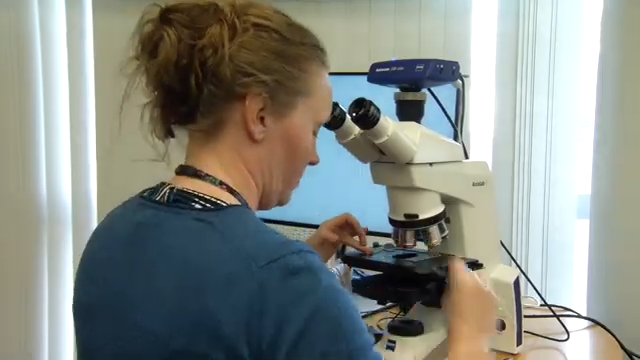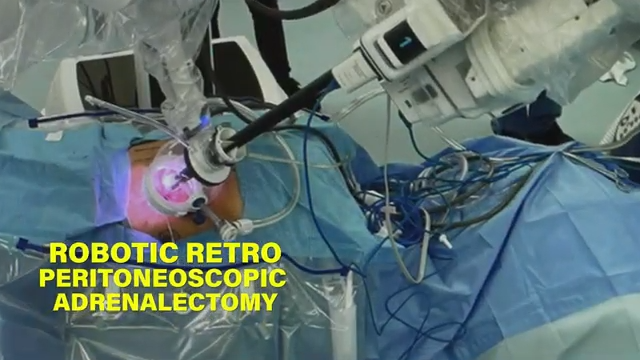TUCSON, Ariz. (Ivanhoe Newswire) — Levodopa is the best-known treatment for Parkinson’s, but it can cause some other debilitating side effects. Now, researchers at the University of Arizona are testing an old drug, in addition to levodopa to see if it brings relief.
Sharon Kha started taking levodopa for Parkinson’s in 2005. Now she has dyskinesia, uncontrollable movements of the body.
Kha shared, “It is so frustrating when you start having these large involuntary movements, because they’re intrusive.”
Neuroscientist Torsten Falk’s research indicates that the anesthetic ketamine eases dyskinesia in rodents and also in five Parkinson’s patients who were already taking it for pain relief.
“In a way, it’s almost like a reset button where you get a treatment and you have weeks to months-long benefit,” said Torsten Falk, PhD, Associate Professor of Neurology and Pharmacology at the University of Arizona.
Repurposing ketamine for dyskinesia could get it to patients quicker. It’s already been safety tested at higher doses than Falk plans to test.
“If you start with something fresh and new, the problem can really be that it can be five to ten years of safety testing before you can really do a proper trial to look for efficacy,” explained Falk.
Kha says this is great news. “It sounds like a wonderful treatment because these large involuntary movements are so irritating.”
Falk hopes to start a phase one trial in the coming months.
Ketamine can raise blood pressure and cause feelings of dissociation in higher doses. Researchers expect the dosage needed to control dyskinesia will be much lower than that.
Contributors to this news report include: Wendy Chioji, Field Producer; Bruce Maniscalco, Videographer; Cyndy McGrath, Supervising Producer; Hayley Hudson, Assistant Producer; Dave Harrison, Editor.
To receive a free weekly e-mail on Medical Breakthroughs from Ivanhoe, sign up at: http://www.ivanhoe.com/ftk
MEDICAL BREAKTHROUGHS
RESEARCH SUMMARY
TOPIC: KETAMINE STILLS PARKINSON’S
REPORT: MB #4478
BACKGROUND: Parkinson’s disease is a neurodegenerative disorder affecting predominately dopamine-producing neurons in a specific area of the brain called substantia nigra. Symptoms typically develop slowly over years and the progression of symptoms varies from one person to another due to the diversity of the disease. Those afflicted with the disease may experience tremor, bradykinesia (slowness of movement), limb rigidity, gait, and balance problems. There are also non-motor symptoms that often impact people more, including apathy, depression, constipation, sleep behavior disorders, loss of sense of smell, and cognitive impairment. While Parkinson’s is not fatal, disease complications can be serious. The Centers for Disease Control rated complications from Parkinson’s as the 14th cause of death in the U.S. The cause of the disease remains largely unknown and although there is no cure, treatment options vary and include medications and surgery.
(Source: http://www.parkinson.org/understanding-parkinsons/what-is-parkinsons)
TREATMENT: There are many medications available to treat Parkinson’s symptoms, but none yet that reverse the effects of the disease. People with Parkinson’s usually need dopaminergic medications because they are missing dopamine in the brain, primarily due to impairment of neurons in the substantia nigra. These types of drugs generally help reduce muscle rigidity, improve speed and coordination of movement, and lessen tremors. Surgery can be an effective treatment option but is reserved for patients who have exhausted medical treatment of tremor or who suffer profound motor fluctuations. According to the Parkinson’s Outcomes Project, people who start exercising earlier for at least 2.5 hours a week experience a slower decline in quality of life than those who start later.
(Source: http://www.parkinson.org/Understanding-Parkinsons/Treatment)
DON’T HESISTATE TO REPORT SYMPTOMS: A study from the University of South Florida determined early Parkinson’s patients wait too long before seeking medical attention, or start taking symptomatic medications before they’re required, dramatically shrinking the pool of candidates for clinical trials. Since the pace of the disease’s progression varies among patients, the months following diagnosis are crucial to researchers attempting to find a cure. Patients should seek assessment soon after noticing the onset of tremor or slow movement. Physicians should also consider referring patients to clinical trials soon after diagnosis and delay prescribing symptomatic medication until it’s necessary. If a person has symptoms resembling those of Parkinson’s, he or she should contact the Parkinson’s Foundation’s free Helpline at 1-800-473-4636.
(Source: https://medicalxpress.com/news/2018-09-early-parkinson-patients-medical.html)
FOR MORE INFORMATION ON THIS REPORT, PLEASE CONTACT:
Jean Spinelli
520-626-2531
If this story or any other Ivanhoe story has impacted your life or prompted you or someone you know to seek or change treatments, please let us know by contacting Marjorie Bekaert Thomas at mthomas@ivanhoe.com




